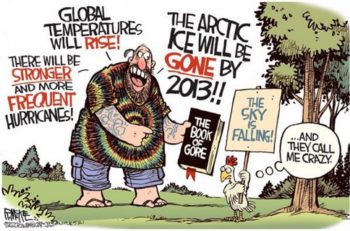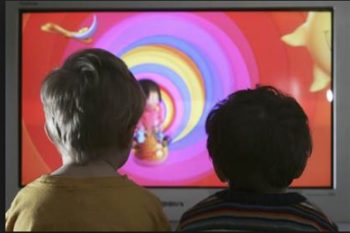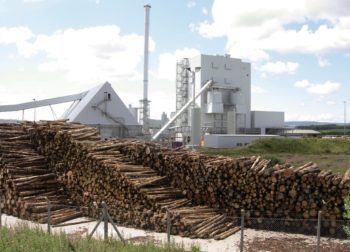
Most journalists and people outside of the community of establishment climate scientists ‘get it’ that this is about the process of establishing credibility for climate data sets and how NOAA NCDC/NCEI have failed to follow NOAA’s own policies and guidelines, not to mention the guidelines established by Science for publications.
In this post, I go through the critiques of Rose/Bates made by NOAA scientists and other scientists working with surface temperature data. They are basically arguing that the NOAA surface temperature data sets are ‘close enough’ to other (sort of) independent analyses of surface temperatures. Well, this is sort of beside the main point that is being made by Bates and Rose, but lets look at these defenses anyways. I focus here more on critiques of what John Bates has to say, rather than the verbiage used by David Rose or the context that he provided.
The Data: Zeke Hausfather and Victor Venema
You may recall a recent CE post where I discussed a recent paper by Zeke Hausfather Uncertainties in sea surface temperature. Zeke’s paper states that it has independently verified the Huang/Karl sea surface temperatures.
Zeke has written a Factcheck on David Rose’s article. His arguments are that:
- NOAA’s sea surface temperatures have been independently verified (by his paper)
- NOAA’s land surface temperatures are similar to other data sets
- NOAA did make the data available at the time of publication of K15
With regards to #1: In a tweet on Sunday, Zeke states
Zeke Hausfather ‚Äè‚Ä™@hausfath ‚Ä™@KK_Nidhogg‚Ä™ @ClimateWeave @curryja and v5 is ~10% lower than v4. Both are way above v3, which is rather the point.
What Zeke is referring to is a new paper by Huang et al. that was submitted to J. Climate last November, describing ERSSTv5. That is, a new version that fixes a lot of the problems in ERSSTv4, including using ships to adjusting the buoys. I managed to download a copy of the new paper before it was taken off the internet. Zeke states that v4 trend is ~10% lower than v5 for the period 2000-2015. The exact number from information in the paper is 12.7% lower. The bottom line is that sea surface temperature data sets are a moving target. Yes, it is good to see the data sets being improved with time. The key issue that I have is reflected in this important paper A call for new approaches to quantifying biases in observations of sea surface temperature, which was discussed in this previous CE post.
Regarding #2. Roger Pielke Sr. makes the point that ALL of the other data sets use NOAA’s GHCN data set. Zeke makes the point that CRUT and Berkeley Earth do not use the homogenized GHCN data. However, as pointed out by John Bates, there are serious problems with the GHCN beyond the homogenization J
Regarding #3. John Bates’ blog post states: “NOTE: placing a non-machine readable copy of a dataset on an FTP site does not constitute archiving a dataset”
Victor Venema has a blog post David Rose’s alternative reality. The blog post starts out with a very unprofessional smear on the Daily Mail. He provides some plots, cites recent articles by Zeke and Peter Thorne. Nothing worth responding to, but I include it for completeness. The key issues of concern are in John Bates’ blog post (not what David Rose wrote).
The fundamental issue is this: data standards that are ‘ok’ for curiosity driven research are NOT ‘ok’ for high impact research of relevance to a regulatory environment.
Peter Thorne and Thomas Peterson
Thomas Peterson, recently retired from NOAA NCDC/NCEI, is a coauthor on K15. He tweeted:
Thomas Peterson ‚Äè‚Ä™@tomcarlpeterson 16h Buoys read 0.12C cooler than ships. Add 0.12C to buoys or subtract 0.12C from ships and you’ll get exactly the same trend.
Response: Well, in the new Huang et al. paper on ERSSTv5, it turns out that adjusting the ships to buoys results in a trend that is lower by 0.07oC. NOT exactly the same – in the climate trend game, a few hundredths of a degree actually matters.
In the comments on John Bates’ post, Peterson writes:
As long as John mentioned me I thought, perhaps, I would explain my concern. This is essentially a question of when does software engineering take precedence over scientific advancement. For example, we had a time when John’s CDR processing was producing a version of the UAH MSU data but the UAH group had corrected a problem they identified and were now recommending people use their new version. John argued that the old version with the known error was better because the software was more rigorously assessed. I argued that the version that had corrected a known error should be the one that people used ‚Äì particularly when the UAH authors of both versions of the data set recommended people use the new one. Which version would you have used?
John Bates email response:
First, Peterson is talking about a real-time, or what we dubbed and interim CDR, not a long term CDR. So he is using incorrect terminology. In fact the UAH interim CDR was ingested and made available by another part of NCDC, not the CDR program. Of course, I never said, use the old one with the known error. But, what I actually did is check with the CDR program for what they did. And since, yes, this was fully documented I can go back and find exactly what happened as the trail is in the CDR document repository. The CDR has a change request and other processes for updating versions etc. This is done all the time in the software engineering world. As I recall, there was a very well documented process on what happened and it may actually be an example to use in the future.
So, Peterson presents a false choice. The CDR program guidelines are for non-real time data. We did set up guidelines for an interim CDR, which is what Peterson is referring to. So, customers were provided the opportunity to get the interim CDR with appropriate cautions, and the updated, documented CDR when it became available later.















